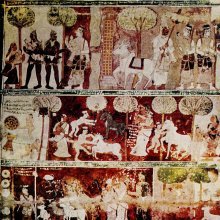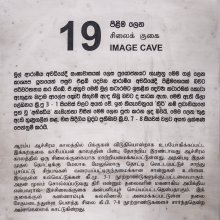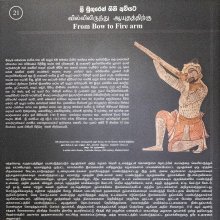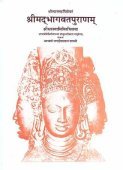Mortar: 2 definitions
Introduction:
Mortar means something in Hinduism, Sanskrit. If you want to know the exact meaning, history, etymology or English translation of this term then check out the descriptions on this page. Add your comment or reference to a book if you want to contribute to this summary article.
Images (photo gallery)
In Hinduism
Shilpashastra (iconography)
Source: Shodhganga: Elements of Art and Architecture in the Trtiyakhanda of the Visnudharmottarapurana (shilpa)A Mortar is used for the process of pounding various ingredients, as part of the process of creating a Canvas, in the ancient Indian art of Painting (citra), according to the Viṣṇudharmottarapurāṇa, an ancient Sanskrit text which (being encyclopedic in nature) deals with a variety of cultural topics such as arts, architecture, music, grammar and astronomy.—Canvas is a kind of surface on which a painter can draw a picture. In ancient time walls are seen to be plastered with different substances and these were prepared for Painting. [...] For the process of plastering on a wall (i.e., kuḍya or bhitti), the painter needs to mix and mingle various ingredients. After that, the mixture should be transferred to a touch stone mortar for the process of pounding.

Shilpashastra (शिल्पशास्त्र, śilpaśāstra) represents the ancient Indian science (shastra) of creative arts (shilpa) such as sculpture, iconography and painting. Closely related to Vastushastra (architecture), they often share the same literature.
Vastushastra (architecture)
Source: archive.org: Catalogue of Pancaratra Agama Texts (vastu)Mortar (used to cement the icons in place) is denoted by the Sanskrit term Sudhā, as discussed in chapter 9 (Kriyapada) of the Padma-Samhita: the most widely followed of Samhita covering the entire range of concerns of Pancaratra doctrine and practice (i.e., the four-fold formulation of subject matter—jnana, yoga, kriya and carya) consisting of roughly 9000 verses.—Description of the chapter [mūrdheṣṭakāvidhi-vimānadevatākalpana]: [...] [After placing the Śikhākumbha-pot]—[...] Since many of the icons on upper storeys [of the vimāna] will have been made first, then fastened at their appointed places on śūlas, the mortar [sudhā] used to cement them in place must be made in a certain way to assure that they will remain long-standing and secure (70b-76a). Five colors for paints and other decorations are mentioned briefly in closing (766-77).

Vastushastra (वास्तुशास्त्र, vāstuśāstra) refers to the ancient Indian science (shastra) of architecture (vastu), dealing with topics such architecture, sculpture, town-building, fort building and various other constructions. Vastu also deals with the philosophy of the architectural relation with the cosmic universe.
See also (Relevant definitions)
Query error!
Full-text (+451): Ulukhala, Kandana, Udukhala, Vilepa, Aulukhala, Sudha, Ulukhalika, Vajralepa, Avaghata, Musala, Ashmabhala, Lepana, Dantolukhalika, Khala, Kandani, Lauhabhanda, Lepa, Kshoda, Vaiṇa, Drishadolukhala.
Relevant text
Search found 168 books and stories containing Mortar, Mortars; (plurals include: Mortars, Mortarses). You can also click to the full overview containing English textual excerpts. Below are direct links for the most relevant articles:
Village Folk-tales of Ceylon (Sri Lanka), vol. 1-3 (by Henry Parker)
Story 227 - The Gamarala who went to the God-World < [Part III (b) - Stories of the Western Province and Southern India]
Story 251 - How they killed the Great-bellied Tambi < [Part III (b) - Stories of the Western Province and Southern India]
Story 6 - The Millet Trader < [Part I - Stories told by the Cultivating Caste and Vaeddas]
Bharadvaja-srauta-sutra (by C. G. Kashikar)
Rasa Jala Nidhi, vol 1: Initiation, Mercury and Laboratory (by Bhudeb Mookerjee)
Part 3 - Drawing of a hexagonal lotus diagram < [Chapter II - Initiation of Disciple]
Part 5 - Details and Equipments of the Laboratory < [Chapter I - Requisites for metallurgical operations]
Part 1 - Alchemical apparatus (yantra) < [Chapter VI - Laboratory equipment]
Manusmriti with the Commentary of Medhatithi (by Ganganatha Jha)
Verse 5.115-116 < [Section XIII - Purification of Substances]
Verse 3.88 < [Section VII - Duties of the Householder]
Verse 6.17 < [Section III - Details of the Hermit’s Life]
Charaka Samhita and Sushruta Samhita (by Nayana Sharma)
Appendix 1 - Description of a Hospital < [Chapter 4]
Infirmaries and Hospitals in ancient India < [Chapter 4]
Class and Gender (Introduction) < [Chapter 5]
Atharvaveda ancillary literature (Study) (by B. R. Modak)
Part 5.3.3 - Omens related to Inanimate objects < [Chapter 2b - A Topical Analysis of the Atharvaveda-Parisistas]
Part 3a.7 - Other implements at the Sacrifice < [Chapter 2b - A Topical Analysis of the Atharvaveda-Parisistas]
Part 3a.12 - The Samuccaya-prayascittani < [Chapter 2b - A Topical Analysis of the Atharvaveda-Parisistas]
Related products






